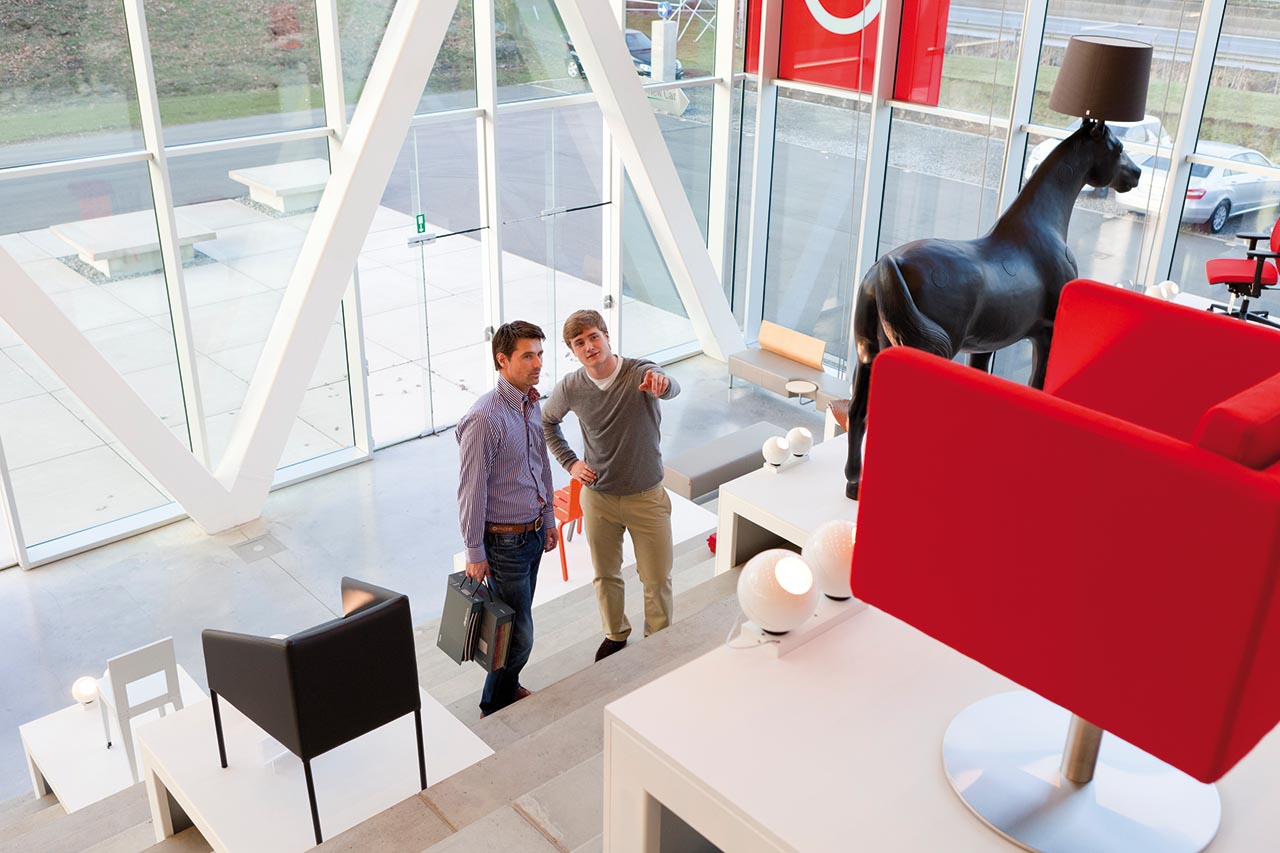
As a specialist in air conditioning and ventilation, Daikin happily provides you some tips on how to ventilate offices and stores for a fresh, healthy and safe work environment.
Basic Knowledge of Ventilation
Indoor air pollutants (substances that are harmful to humans) include carbon dioxide, carbon monoxide, formaldehyde (HCHO), house dust, pollen, bacteria, and viruses that exist in indoor air.
Ventilation can be expected to dilute these pollutants and eliminate them from inside the room of a building.

Ventilation dilutes and removes pollutants in indoor air.
In a completely closed room in a building, air cannot easily leave the room, causing air pollutants to remain and accumulate in the room. This can impact the health of people in the room. Ventilation is extremely important for diluting and eliminating these air pollutants.
Most air conditioners cannot perform ventilation.
An air conditioner creates a comfortable environment by drawing air from inside the room, cooling or warming it, then returning that air to the room. Indoor air is not replaced by fresh outdoor air.
Most air conditioners for stores and offices cannot perform ventilation on their own.
It is therefore necessary to ventilate by means other than an air conditioner.
Offices and Stores Equipped with Ventilation Systems
Buildings that lease space for offices and stores are generally well-ventilated. Ventilation equipment is specified by building code according to floor area and the number of people present. Building entrance doors and windows remain closed so that the office workers can work comfortably and efficiently and the customers shopping in the stores can spend their time in comfort.
Large buildings may not have windows or have windows that are impossible to open. Ventilation equipment is then installed to prevent stale air from accumulating in the building.
In crowded spaces (busy stores or full meeting rooms), opening windows and doors increases the efficiency of the ventilation system to actively change the indoor air.

To maximize ventilation, we recommend that you first determine the type of ventilation equipment installed in your office or store and understand how it works and should be operated.
Tips on Office and Store Ventilation
Depending on the building where an office or store is located, ventilation equipment may be operated by the building tenants individually or by the building management company. Also, the ventilation method varies according to whether the windows can be opened or not.
In our Tips on Office and Store Ventilation, we describe ventilation methods for the following 3 cases:
Small Stores
Freestanding buildings such as restaurants and shops facing the street
Ventilation method:
1. Check the ventilation equipment installed
2. Create an air passage by opening windows and entrance doors
- Using ventilation equipment with windows and doors open
- Opening windows to create an air passage
- Ventilating rooms without windows (private room)

Small to Medium-sized Offices
Offices located in small and medium-sized buildings with 10 floors or less
Ventilation method:
1. Check the ventilation equipment installed
2. Create an air passage by opening windows and entrance doors
- Using ventilation equipment with windows and doors open
- Opening windows to create an air passage
- Ventilating conference rooms without windows
Experimental data: CO2 concentration in conference rooms

Offices and Stores in Large Buildings with Closed Windows
Ventilation method description:
Check items for ventilation equipment
1. Installation location and type of ventilators and ventilation equipment (ventilation vents: air exhaust vents, air supply vents, etc.)
2. Operating hours for ventilation equipment (weekdays / holidays)
3. Amount of ventilation set for ventilation (weekdays / holidays)
4. Ventilation equipment maintenance times and schedule
5. Schedule and cycle for cleaning and replacing filters
Summary of Ventilation Methods for Offices and Stores
When ventilating an office or store, it is best to first check what type of ventilation equipment is installed and know how to properly use it to ventilate the indoor space. However, depending on factors like the time of day, number of people assembled, change in office partitions, and cleanliness of filters, you may experience inadequate ventilation and discomfort. Using one of the methods introduced here, you can create airflow and effectively ventilate the indoor space to match the work environment and building design. For conference rooms and other closed spaces, maintaining proper ventilation by opening the door before the start and after a meeting is a good routine to follow.

Introduce "ventilation rules for office rooms"
If window ventilation is possible for your office, why not establish ventilation rules and practice daily ventilation by rotating responsibility for executing those rules.
By opening the windows before starting work each morning and letting out all of the trapped indoor air that had accumulated overnight, you can start each day in a healthy and pleasant work environment.
Especially on Mondays during the summers when hot, stagnant air has collected over the weekend, ventilating the room before turning on the air conditioner will help save electricity by lowering the room temperature.
Introduce "ventilation rules for office rooms"
We recommend implementing ventilation routines for when people enter and leave the conference rooms. For example, ventilate a room by opening the door for a few minutes every hour or when the meeting is over and there is no one in the room. Implementing simple rules, like always leaving the door open when a meeting is over, leads to a good practice for ventilation.
Ventilation rules for the conference rooms (example)
“Changing the air at the same time as the members change”
- Make sure to open the door for 10 minutes in a one-hour meeting
- Leave the door open when you leave the room after a meeting
- Open the doors of each conference room every day at the end of work and when leaving the office

